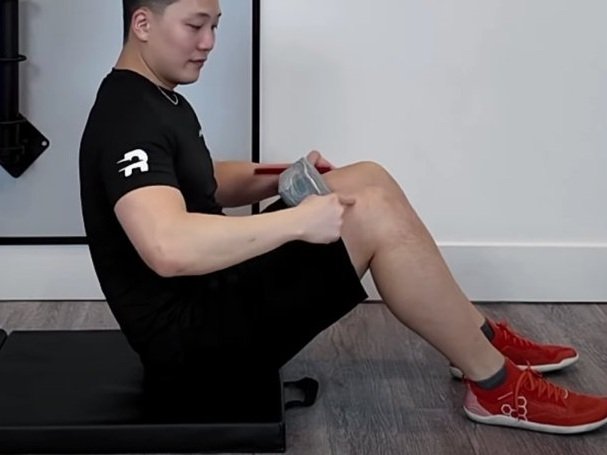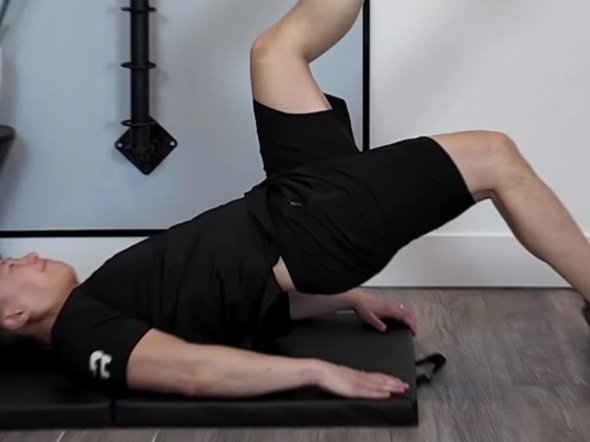Knee Bursitis
What is knee bursitis?
Is bursitis of the knee serious? An article to fill you in on knowledge gaps
Knee Bursitis Definition
Knee bursitis is inflammation of the bursae found around the knee. This condition usually co-exists with other knee injuries and has a tendency to be secondary to another condition. Injuries such as joint damage, knee sprain / strain, fascial friction stress, or fracture can lead to knee bursitis.
There are 12 bursa found around the knee. Bursa are sacs of fluid that are naturally found to act as a cushion to reduce friction between layers of tissue in the body. Within the knee, the iliotibial band bursa, pes anserine bursa, gastrocnemius bursa prepatellar bursa tend to be the most commonly injured. When injured the conditions are called ITB syndrome, pes anserine bursitis, Baker’s Cyst, and Housemaid’s knee respectively.
How do you get knee bursitis?
Knee bursitis can be the result of repetitive overuse or acute trauma. Acute trauma in the form of an external physical force (such as a direct blow or sprain/strain) can cause tissue inflammation which causes swelling in the knee. This is commonly known as ‘water on the knee’. Likewise, repetitive strain injuries such as stress fractures or tendinitis can cause inflammation and swelling to occur.
What are symptoms of bursitis in the knee?
Knee bursitis typically presents as a dull ache pain or can give a sensation of added pressure on the knee. The area may be tender or swollen as well and pain normally increases with activity as well. Swelling may cause your gait to be altered. Upon palpation the fluid may feel ‘boggy’ and it may make your patella (knee cap) appear to be floating above the knee.
Movement may be painful due to the swelling in both passive and active movements. Generally no increase in pain is felt however with isometric muscle contractions unless there is a co-existing muscle strain or tendinopathy.
How do you know if you have bursitis?
Knee bursitis is known to occur in any age in adulthood and occurs in females more than males. Risk factors such as excessive exercise (such as running, sports), occupational demands (tile setters, construction workers, maids), previous knee injury (ligament or meniscus damage), direct pressure (tight knee brace), muscle contracture, and ongoing tendinitis are known to be contributors to knee bursitis.
You can get your knee assessed by a qualified physiotherapist or chiropractor for a formal diagnosis. If you are in Toronto or Markham, you do not require a referral from your medical doctor for a consult with these health care professionals.
What can be mistaken for bursitis?
The differential diagnosis list for knee bursitis is extensive as knee bursitis often presents as a secondary injury to other primary knee conditions. Differentials include ligament sprain (MCL, LCL, ACL, PCL), muscle strain (quadriceps, hamstrings, gastrocnemius, hip adductors), stress fracture, patellofemoral pain syndrome, meniscus tears, Osgood-Schlatter disease, and osteochondritis dessicans. Differentials can be ruled in or out by your local chiropractor or physiotherapist. To book in with a Rehab Hero clinician, click the button below:
How do you get rid of knee bursitis?
There are a variety of treatment options available to reduce knee bursitis. If your knee bursitis is a result of another injury, you will need to prioritize treating the primary injury to reduce your symptoms. A few treatment options include:
Massage Therapy: Myofascial release massage can be used on hypertonic muscles that cross the affected bursa. Trigger point therapy may also be used to improve blood circulation and reduce association muscle guarding. Effleurage massage can be used to reduce local swelling.
Low Level Laser Therapy (cold laser): LLLT may be used to improve tissue healing, reduce inflammation and swelling, and reduce pain. This can be applied by a qualified physiotherapist or chiropractor.
Acupuncture: Acupuncture to local points around the knee can be used to reduce pain, improve circulation, and increase function. A certified massage therapist, physiotherapist, or chiropractor may also use electrical stimulation in combination with acupuncture (also known as electroacupuncture) for improved results.
Rehabilitation: Rehabilitative exercises will generally focus on improve range of motion and maintaining strength during the acute phases of healing. Exercises include stretching, isometric muscle contractions, and light knee mobility exercises. When the acute phases of healing have passed, exercises may focus on restoring strength and function to the quadriceps, hamstrings, hip adductors and hip abductors.
Is walking good for knee bursitis?
Any type of movement that is non-aggravating to your symptoms will be beneficial for your recovery. This will allow the ‘muscle pump’ effect of your movements to help clear excessive swelling that is occurring locally. Low impact exercises such as walking, using a stationary bike, or light swimming are generally considered safe movements that can promote your recovery time.
Written By:
Dr. David Song, Chiropractor, Acupuncture Provider, Rehab Coach






















